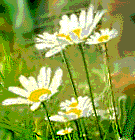|
|
Spring in Sweden |
|
|
|
The dark nights of the Swedish winter are long, and the approach of Spring and light unleashes a spirit of renewal. As natural forces stir life from the earth and people from their winter mindset, the supernatural is at work, too. People once believed that spring was a time when evil forces spread mischief across the land, and today the benevolent remnant of this myth can be seen in the tradition of the "Easter witch." On the Thursday before Easter, young girls paint their faces, put on scarves and long skirts, then roam from house to house collecting candy. On the hillsides, people light bonfires to scare off the evil spirits, and the blasts of firecrackers can be heard as revelers simulate shooting witches from the sky. Intertwined with the supernatural festivities is the traditional Christian holiday. The Swedish symbol of Easter is a birch twig decorated with colored feathers, and as the holiday approaches these colorful charms fill the markets, along the ubiquitous candy Easter eggs. Following Easter comes another tradition steeped in ancient belief, Walpurgis Night. On this night, April 30th, crowds of Swedish men and women gather on hilltops around roaring bonfires. Many wear white caps with lyre emblems, the symbol of present and former students, and as the fires blaze they sing songs applauding Spring's arrival. Originally, the fires were meant to scare off witches, but today they remind distant watchers of a warmth soon to come. The traditional meal on this evening is gravlax - fresh salmon marinated in salt, sugar and fresh dill.
Copyright (c) 1997
- 2008 interKnowledge
Corp. |

